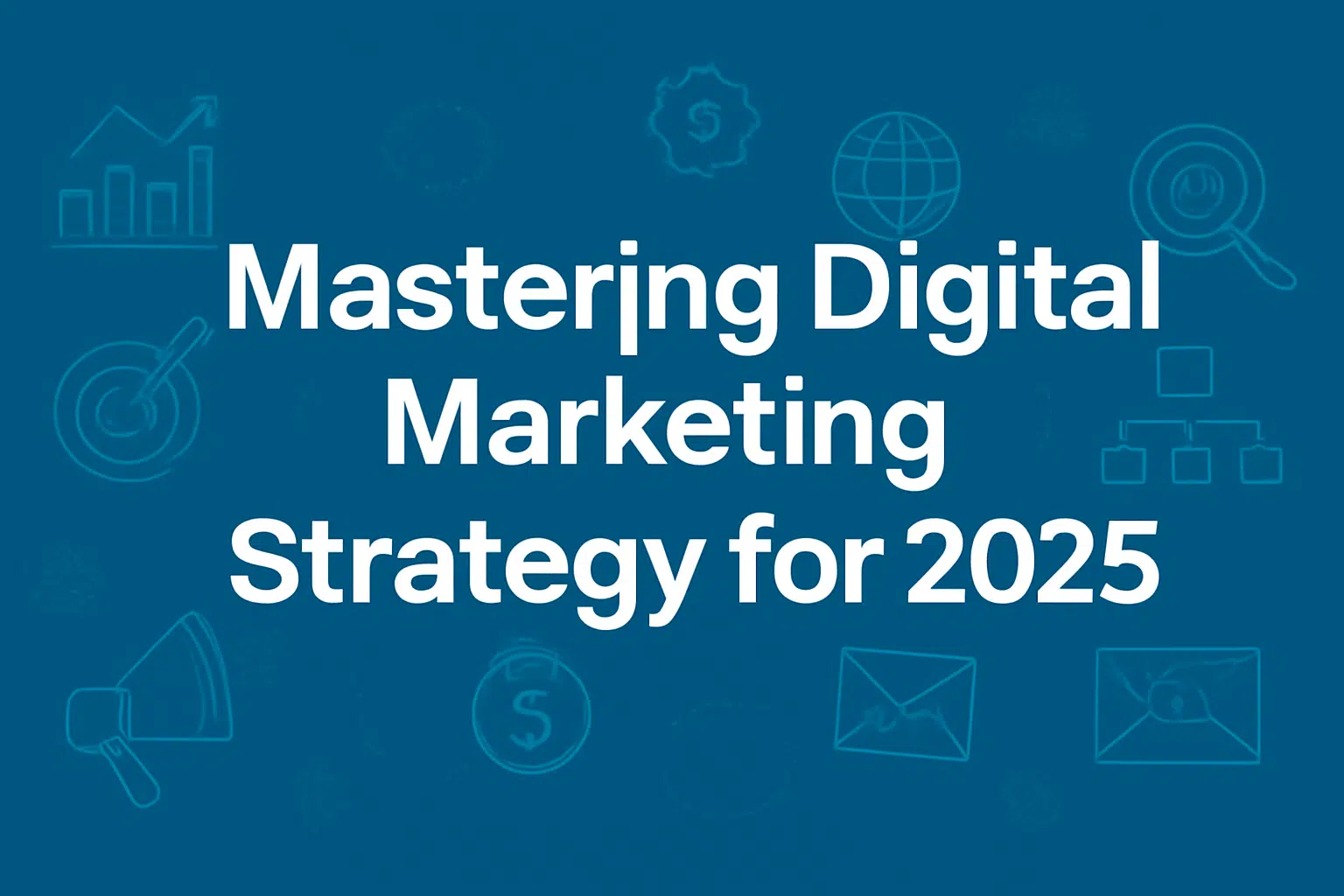
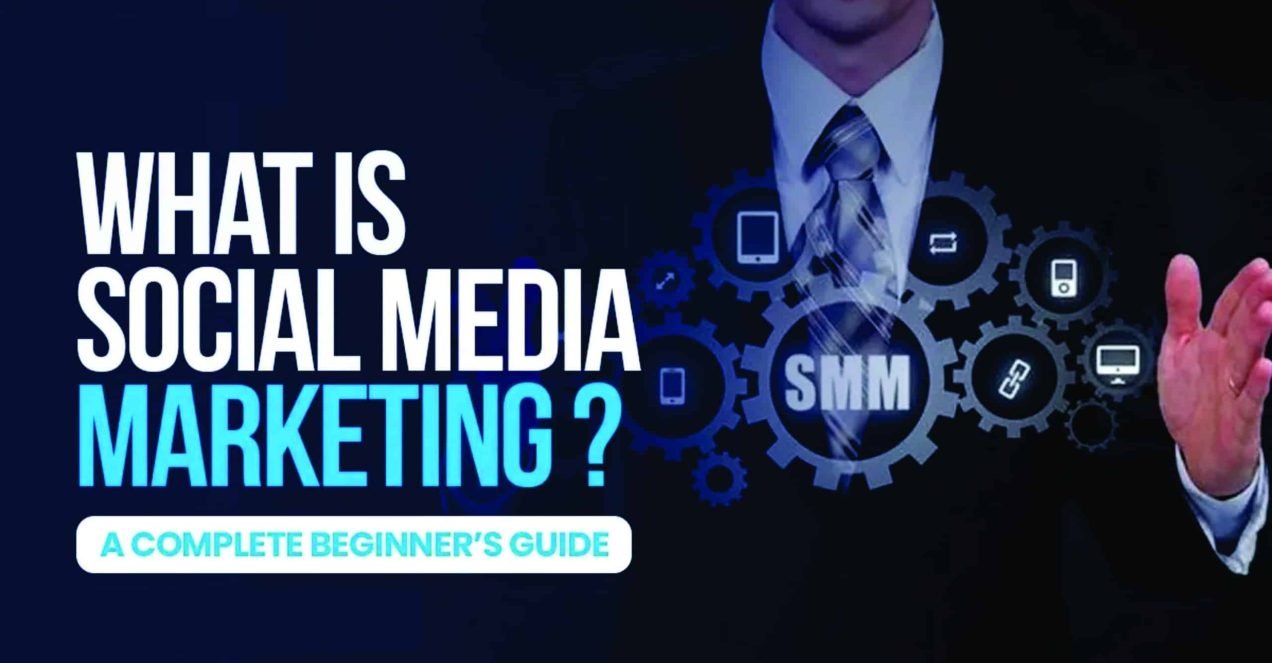
Overwhelmed by Social Media? You’re Not Alone.
Let’s be honest social media marketing can feel like a never-ending to-do list. Whether you’re a small business owner, content creator, or just starting out, you’re probably familiar with the frustration: juggling platforms, struggling to post consistently, watching engagement stay flat, and wondering if any of it is actually working.
Add to that the constant updates to algorithms, new features popping up overnight, and the pressure to “go viral” — it’s no wonder so many people feel behind before they even start.
But here’s the truth: social media marketing doesn’t have to be chaotic or overwhelming. When approached with strategy rather than guesswork, it becomes one of the most powerful tools you have to grow your brand, connect with customers, and drive real business results.
This guide will walk you through a complete, start-to-finish strategy that simplifies the process. From choosing the right platforms to creating engaging content and tracking your ROI, you’ll get clear, actionable steps — no fluff, no hype. Just practical advice that works in 2025’s fast-moving digital world.
What You’ll Gain from This Guide:
Whether you’re starting from scratch or trying to get better results from your existing efforts, this guide is designed to meet you where you are and take you where you want to go.
About the Author
This guide is brought to you by a social media strategist Hamid Mir with 6+ years of hands-on experience helping brands grow across platforms like Instagram, LinkedIn, Facebook, TikTok, and Pinterest. With a background in content marketing and a results-driven approach, I’ve helped dozens of businesses go from scattered posting to strategic growth and now, I’m here to help you do the same.
What is Social Media Marketing (SMM)?
Social Media Marketing is more than just posting pretty photos or catchy quotes. At its core, SMM is the practice of using social media platforms strategically to connect with your audience, build brand awareness, drive traffic, and achieve business goals.
A Quick Look at the Evolution
Social media marketing has evolved far beyond the days of simply scheduling posts. Today, it’s about community-building, storytelling, real-time engagement, and analytics-driven decisions. Algorithms prioritize authentic content, and users expect value, not just promotions.
Whether you’re building a personal brand or managing a small business, social media offers a direct line to your audience — if you use it right.
Why SMM Matters Today
Key Benefits of Social Media Marketing
| Benefit | Explanation | Why It Matters |
| Increased Brand Awareness | Reach a larger audience and introduce your brand to new people. | Builds recognition and trust — the first step in the buyer journey. |
| Improved Customer Engagement | Direct interaction through comments, DMs, polls, and more. | Strengthens relationships, encourages loyalty, and boosts algorithm visibility. |
| Driving Website Traffic | Share content that leads users to your website or product pages. | More traffic means more opportunities to generate leads or make sales. |
| Enhanced SEO (Indirectly) | Social signals (shares, likes, links) can support SEO efforts. | Improves your online visibility beyond just social platforms. |
| Cost-Effective Marketing | Organic posting and ads are cheaper than traditional media. | Ideal for small budgets and startups. |
| Valuable Customer Insights | Use analytics to learn who your audience is and what they love. | Refines your messaging, product development, and content strategy. |
| Building Brand Loyalty | Consistent, authentic presence builds long-term trust. | Loyal followers often become repeat customers and brand advocates. |
| Lead Generation | Use forms, gated content, or DMs to capture leads directly. | Turns interest into real business opportunities. |
| Customer Support Channel | Answer questions or solve issues in real-time. | Improves customer experience and satisfaction. |
Step 1: Define Your Goals
Before you write a single post or schedule a single story, there’s one essential step you must take: set clear, strategic goals.
Without clear goals, your social media marketing becomes guesswork — posting for the sake of posting. That leads to frustration, burnout, and a lack of measurable progress. But when your goals are defined and aligned with your business vision, every post serves a purpose.
Why Goals Are the Foundation of Social Media Success
Think of your social media goals as the GPS for your marketing journey. They keep you focused, guide your content, and help you measure whether your efforts are working.
Most importantly, your goals should tie directly into your overall business objectives — whether that’s driving sales, generating leads, increasing web traffic, or building a stronger customer community.
Some common examples include:
Set SMART Goals for Your SMM Strategy
To make your goals meaningful and trackable, use the SMART framework: Specific, Measurable, Achievable, Relevant, and Time-bound.
| SMART Component | Explanation | SMM Example |
| Specific | Clear, focused, and easy to understand. | Increase brand awareness on Instagram. |
| Measurable | Can be quantified or tracked with data. | Get 500 new Instagram followers. |
| Achievable | Realistic based on your resources and audience. | Increase website traffic from social media by 15%. |
| Relevant | Tied to your overall business goals. | Drive leads for our new service via LinkedIn. |
| Time-bound | Has a set deadline or timeframe. | Gain 500 new Instagram followers within the next 3 months. |
SMART Goal Examples for Different Business Types
Expert Tip: Focus to Stay Effective
Don’t try to chase every goal at once.
Starting with one to three clear objectives allows you to focus your content, track performance meaningfully, and avoid burnout. Once you’ve mastered those, you can expand your goals or shift focus as needed.
Step 2: Research Your Target Audience
Know Your Audience Before You Post
You can’t market effectively to people you don’t understand. One of the biggest mistakes beginners make is creating content without a clear idea of who they’re trying to reach. Knowing your audience inside and out helps you craft content that connects, choose the right platforms, and ultimately, achieve your goals.
Why Audience Research Matters
Understanding your ideal customer is what separates strategic marketing from random posting. When you know their demographics, psychographics, and behaviors, you can tailor your content, messaging, and platform choices to meet their specific needs and preferences.
This step directly solves the pain point of choosing the right social media platforms. When you understand where your audience spends time online and how they behave, it becomes easier to focus your energy where it counts.
Where to Find Audience Information
You don’t need to guess — there are several accessible ways to learn about your audience:
Audience Insight Table: What to Look For and Why
| Audience Insight | What to Look For | Why It’s Important |
| Demographics | Age, location, gender, income, occupation, education. | Helps determine which platforms to use and how to shape messaging. A 45-year-old executive uses LinkedIn, not TikTok. |
| Psychographics | Hobbies, interests, beliefs, lifestyle choices. | Guides tone, content themes, and visual direction. A fitness brand can focus on wellness and motivation. |
| Pain Points & Challenges | Problems they need solved (e.g., lack of time, poor sleep, marketing confusion). | Lets you speak directly to their frustrations and present your solution as the fix. |
| Goals & Aspirations | What they want to achieve — success, happiness, convenience, growth. | Connects your product or service to their desired outcome. “This helps you do XYZ faster/easier/better.” |
| Online Behavior | What platforms they use, when they’re active, and what content they consume. | Helps determine where and when to post for maximum visibility. |
| Language & Tone | Formal or informal speech, use of emojis, slang, humor preferences. | Aligns your messaging style so it feels familiar and trustworthy. |
Step 3: Choose the Right Platforms
Stop Trying to Be Everywhere
One of the biggest causes of burnout in social media marketing is trying to be on every platform. You don’t need to do it all — you just need to be where your audience is most active and where your content fits best.
Expert Tip: Start with 1 to 3 platforms based on your goals, your audience, and the content you can realistically create.
Factors to Consider When Choosing Platforms
Platform Comparison for Beginners & Small Businesses
| Platform | Primary Audience Focus | Content Formats (Key) | Best Use Cases |
| Broad demographics; local & community-focused | Text, Images, Video (Live), Groups, Ads | Community building, event promotion, targeted ads | |
| Visual-driven; age 18–39 | Reels, Stories, Feed Images, Live, Guides | Product showcasing, influencer marketing, lifestyle branding | |
| Professionals & B2B audience | Articles, Docs, Video, Polls | Networking, thought leadership, lead generation | |
| Twitter (X) | Real-time conversations; news & niche communities | Short text, GIFs, Images, Polls | Brand voice, support, trending news |
| Idea-seekers; DIY, decor, planning | Idea Pins, Images, Infographics | Blog traffic, e-commerce, niche content | |
| TikTok | Creative, Gen Z and Millennials | Short-form videos, Trends, Duets | Viral marketing, entertainment, brand storytelling |
| YouTube | Broad age range; evergreen content seekers | Long videos, Shorts, Live | Tutorials, vlogs, reviews, educational content |
Future Feature: Interactive Platform Selector Tool
To make platform selection even easier, we’ll soon offer a free, interactive “Platform Selector” quiz — where you’ll answer a few quick questions and get a personalized recommendation based on your audience, goals, and content type.
Stay tuned for this helpful tool — or sketch one out yourself using the criteria above!
Step 4: Develop Your Social Media Strategy
From Planning to Action: It’s Time to Get Strategic
You’ve defined your goals, identified your audience, and chosen the right platforms. Now it’s time to turn those insights into a concrete, actionable strategy — the roadmap that guides your content, scheduling, engagement, and more.
A social media strategy isn’t just a list of posts. It’s a comprehensive plan that ensures your social media activity is purposeful, manageable, and aligned with your business outcomes.
Key Components of an Effective Social Media Strategy
| Strategy Component | Description | Key Questions to Ask |
| Goals & Objectives | Define what success looks like. Refer back to your SMART goals (Step 1). | Are my goals SMART? Do they align with business priorities like sales, leads, or growth? |
| Target Audience | Understand who you’re speaking to (Step 2). Tailor your messaging and content. | Who exactly am I trying to reach? What are their interests, struggles, and motivations? |
| Platform Choice | Stay focused on the 1–3 platforms that matter most (Step 3). | Can I realistically manage these platforms and reach my audience effectively here? |
| Content Pillars/Themes | Identify 3–5 broad topics relevant to your brand and audience. | What themes will I consistently talk about to educate, inspire, or entertain? |
| Content Mix | Choose a balance of content types: promotional, educational, entertaining, etc. | Am I adding value with my posts, or just selling? Can I follow the 80/20 value ratio? |
| Posting Frequency & Timing | Determine a sustainable posting schedule. Quality > quantity. | How often can I post consistently? When is my audience most active online? |
| Engagement Strategy | Define how you’ll connect with your audience daily. | How will I respond to comments and DMs? How can I engage proactively with others? |
| Hashtag Strategy | Research platform-appropriate hashtags for reach and relevance. | What hashtags will help new users discover my content? How many should I use per post? |
| Paid Social Approach | Set a plan for using ads, even on a small budget. | What’s my budget? Will I promote posts or run lead-gen campaigns? |
| Measurement & Reporting | Track key metrics regularly to evaluate success and adapt. | What KPIs matter most for my goals? How often will I analyze and adjust my strategy? |
Build Around Your Content Pillars
Content pillars are the core themes or categories that your brand will consistently post about. They keep your messaging focused, help maintain consistency, and give you creative boundaries.
Examples:
Your content pillars should reflect both what your audience cares about and what you want to be known for.
Choose a Content Mix That Adds Value
To keep your content interesting and effective, vary your format and purpose. One simple framework is the 80/20 Rule:
Value Content Examples:
Tips, tutorials, fun facts, user-generated content, stories, memes, behind-the-scenes.
Promotional Content Examples:
New product launches, discounts, booking calls-to-action, testimonials.
Set Your Posting Frequency & Timing
Posting consistently is more important than posting constantly. It’s better to show up regularly (even just 2–3 times a week) than to post daily for a week and disappear the next.
Use your platform insights (from Step 2) to identify when your audience is online and schedule posts accordingly.
Example Schedule for Small Business (Starting Out):
Adjust based on your capacity and what performs best.
Plan for Real Engagement (Not Just Reach)
Social media is a two-way street. Don’t just broadcast — listen and interact.
💬 Expert Tip: Authentic engagement builds trust, encourages community, and often leads to better algorithm reach.
Consider a Paid Social Boost (Optional but Powerful)
Even a small budget can help your posts reach more of the right people.
You don’t need to start big — $5–$20 per day can go a long way when targeting is done right.
Build for Community, Not Just Vanity Metrics
A strong social strategy isn’t just about reach or follower count — it’s about relationships.
Focus on community building:
This approach leads to loyalty, advocacy, and long-term growth — especially valuable for niche or unconventional businesses.
Bonus: Strategy for Unconventional Brands
If your business is in a niche or unusual space, lean into it.
Coming Soon: Downloadable SMM Strategy Template
We’re working on a free downloadable template that helps you map out each of these components step by step — goals, audience, platforms, content plan, and metrics — all in one place.
Stay tuned or create a simple version using a spreadsheet or Notion board!
Step 5: Create Engaging Content
The Heart of Your Social Media Strategy
No matter how solid your goals or platforms are, your success ultimately comes down to one thing: the content you publish. Engaging content grabs attention, delivers value, and encourages interaction — all critical for building trust and momentum on social media.
Popular Types of Content That Perform Well
Here’s a breakdown of high-performing content types with practical tips for success on different platforms:
| Content Type | Platform Suitability | Tips for Success |
| Educational Posts | LinkedIn, Facebook, Instagram, Pinterest, YouTube | Break down complex topics, use carousels or infographics, include clear takeaways. |
| Behind-the-Scenes | Instagram Stories, TikTok, Facebook Stories, Live | Show your workspace, process, or team moments; use casual, authentic video. |
| User-Generated Content | Instagram, TikTok, Facebook, Twitter | Encourage followers to tag you, run challenges, reshare with credit and permission. |
| Polls & Questions | Twitter, LinkedIn, Facebook, Instagram Stories | Ask relevant, easy-to-answer questions; great for audience engagement and research. |
| Curated Content | LinkedIn, Twitter, Facebook | Share industry news or content from others; add your insights or summary. |
| Promotional Posts | All platforms (use sparingly) | Highlight benefits over features, include strong CTAs, always use clean visuals. |
| Live Video | Facebook, Instagram, YouTube, TikTok | Announce beforehand, prepare talking points, interact with viewers in real time. |
| Infographics | Pinterest, LinkedIn, Facebook | Simplify stats or how-to steps, keep it visually clean and branded. |
💡 Expert Tip: Social media is highly visual — even a simple, eye-catching graphic can double your engagement. Invest in high-quality visuals and branding consistency.
Content Creation Best Practices by Platform
Expert Tip: Don’t be afraid to experiment with new formats like Reels, TikToks, or Live sessions. Many creators find unexpected success just by trying something new.
Maximize Output by Repurposing Content
One blog post can become:
Expert Tip: Repurpose your best content across platforms to save time and reinforce your message.
Brainstorm Content Ideas Based on Your Strategy
Start with your content pillars (from Step 4), then brainstorm ideas for each one. For example:
Use trends, FAQs, seasonal events, and audience questions to inspire content.
Content Creation Tools to Simplify the Process
| Tool | Best For |
| Canva | Easy design, templates, animated visuals, scheduling (Pro) |
| Adobe Express | Fast graphic creation with branded templates |
| Desygner | Alternative to Canva with strong branding control |
These tools are beginner-friendly and great for maintaining a professional look without hiring a designer.
Stay Organized with a Content Calendar
📅 Expert Tip: Use a content calendar to plan ahead, maintain consistency, and avoid last-minute stress.
Map out:
You can use tools like Google Sheets, Trello, Notion, or your chosen scheduling platform.
🛠️ Expert Tip: Batch your content creation. Set aside a few hours weekly to create and schedule several posts at once — it’s a huge time-saver.
Step 6: Schedule and Publish Your Posts
Take Control of Your Time
One of the most common struggles with social media marketing is simply finding the time to post consistently. Luckily, you don’t have to do everything in real time.
⏳ Scheduling tools save time, reduce stress, and help you stay consistent — even when life gets busy.
Best Practices for Publishing
Manual Posting vs. Scheduling Tools
| Manual Posting | Best for real-time updates, Stories, and community interaction |
| Scheduling Tools | Best for pre-planning, multi-platform publishing, and automation |
Recommended Scheduling Tools by Category
| Tool Category | Examples | Key Features/Benefits |
| All-in-One Management | Buffer, Hootsuite, Later, Sprout Social, Agorapulse | Multi-platform scheduling, analytics, content calendar, team collaboration |
| Native Schedulers | Meta Business Suite (Facebook/Instagram), Twitter Media Studio | Free tools with direct integration and advanced posting options |
| Design + Schedule Platforms | Canva (Pro), Planoly | Visual-first tools for planning Instagram, Pinterest, and more |
| Platform-Specific Tools | Tailwind (Pinterest, Instagram), Publer | Tailored tools with niche-specific analytics and automation |
🧠 Note: Features vary by plan — start with free versions, then upgrade as needed.
Set Up Your Scheduling Queue
Monitor & Adjust
Even after scheduling, stay flexible:
💬 Pro Tip: Just because it’s scheduled doesn’t mean it’s set in stone. Stay responsive and human.
Step 7: Analyze and Measure Performance
Stop Guessing. Start Measuring.
You’ve been posting, engaging, maybe even running ads — but how do you know if it’s working?
One of the most common struggles in social media marketing is measuring ROI and understanding what the numbers actually mean. It’s easy to get lost in a sea of likes and followers without knowing what truly moves the needle for your business.
📊 Expert Tip: Tracking your performance is how you turn social media from a guessing game into a growth engine.
Why Measuring Metrics Matters
Analytics give you objective insight into:
Regular performance tracking helps you avoid wasting time and resources on tactics that aren’t delivering.
Key Social Media Metrics to Track
| Metric Category | Key Metrics | How to Track | Why It Matters |
| Reach & Awareness | Impressions, Reach, Follower Count | Native analytics, third-party tools | Shows how many people are seeing your content and discovering your brand. |
| Engagement | Likes, Comments, Shares, Saves, Click-Through Rate (CTR) | Native analytics, content tools | Reveals how well your content connects and motivates interaction. |
| Website Performance | Social Traffic, Bounce Rate, Conversion Rate | Google Analytics, UTM links | Tells you if your social traffic is converting into valuable actions (e.g. signups or purchases). |
| Audience Growth | New Followers, Growth Rate | Platform analytics | Helps you understand how quickly your audience is expanding over time. |
| ROI & Conversions | Leads, Sales from Social, CPA | CRM, Ads Manager, Shopify, UTM tracking | Demonstrates real business results from your SMM investment. |
| Share of Voice (SOV) | Brand mentions vs. competitors | Tools like Mention, Brandwatch | Measures your brand’s visibility in the larger industry conversation. |
Vanity Metrics vs. Actionable Metrics
Focus on metrics aligned with your goals. If your goal is lead generation, prioritize metrics like CTR, conversions, and CPA — not just impressions or followers.
Tools for Tracking Performance
✅ Native Platform Analytics
🛠️ Google Analytics
Example:
www.yoursite.com/promo?utm_source=instagram&utm_medium=social&utm_campaign=spring_sale
🔎 Social Listening Tools
Analyze Regularly & Use What You Learn
Make data review part of your routine:
Ask yourself:
📌 Expert Tip: Metrics only matter if they influence your decisions. Don’t just collect data — use it to improve.
What the Data Shows
According to Hootsuite’s 2024 Social Trends Report, marketers who actively track metrics weekly are 43% more likely to hit their social media goals. Data-backed strategy isn’t optional — it’s essential.
Success is Measured, Not Assumed
By tracking the right metrics and adjusting based on performance, you’ll stop spinning your wheels and start seeing clear, measurable growth. Even if you’re just starting out, simple insights like best posting times or top-performing post types can dramatically boost your results.
Step 8: Address Common Social Media Marketing Challenges
It’s Not Just You — These Challenges Are Normal
Even the most experienced marketers hit roadblocks. Whether you’re just starting out or feeling stuck after months of effort, the good news is that most social media challenges have simple, strategic fixes.
💡 Don’t get discouraged. Every marketer has faced these pain points — what matters is how you respond and adapt.
Common Problems and Practical Solutions
| Challenge | Potential Solutions | Key Takeaway |
| Lack of Time | Use a content calendar, batch content weekly, automate with scheduling tools, focus on 1–2 platforms, repurpose your top-performing content into new formats. | Plan ahead and work smarter, not harder. |
| Difficulty Creating Engaging Content | Understand your audience’s interests (Step 2), use trends, experiment with Reels or carousels, include strong visuals, ask questions, and run polls to invite responses. | Connection comes from relevance and creativity. |
| Struggling to Measure ROI | Set SMART goals (Step 1), use UTM parameters, track conversions through Google Analytics, assign values to leads and purchases. | Tie your content to business results, not just likes. |
| Choosing the Right Platforms | Rely on audience data (Step 2), assess your goals (Step 1), and start with manageable platforms (Step 3). | Don’t chase trends — follow your audience. |
| Low Engagement on Posts | Post consistently, ask open-ended questions, respond to every comment, tag relevant people/pages, use strategic hashtags. | Engagement is earned through interaction and authenticity. |
| Keeping Up with Algorithm Changes | Follow platforms’ official blogs (e.g., Meta, TikTok Newsroom), subscribe to newsletters (Social Media Examiner, Later), join online marketing communities. | Stay curious and flexible — what works today may evolve. |
| Uncertainty About Paid Budget | Start with a small budget ($5–$20/day), set clear ad goals (traffic, conversions), use precise targeting, and test creatives. | Test small, learn fast, and scale only what works. |
| Dealing with Negative Comments | Respond quickly and calmly, move the conversation to DMs when needed, thank users for feedback, and create a response plan for repeat issues. | Transparency and professionalism build brand trust. |
| Feeling Overwhelmed | Prioritize 1–2 goals, create manageable routines, celebrate small wins, use templates and automation tools, outsource if possible. | You don’t have to do everything — just the right things. |
| Understanding Analytics | Focus only on key performance indicators tied to your goals (Step 7), use built-in tutorials from platforms, start with weekly/monthly reviews. | You don’t need to be a data expert — just know what matters. |
Pro Tip: Develop a Simple Social Media Crisis Plan
Every business should be ready for unexpected negative publicity or backlash. A basic social media crisis plan includes:
🔐 A well-handled crisis can actually build your credibility — it shows your audience you’re listening, responsive, and accountable.
Final Encouragement
Social media marketing is a long game. It’s normal to hit rough patches, feel confused by the numbers, or worry you’re not doing enough. But by building a strong strategy and adjusting along the way, you’ll grow with confidence and see real results.
🎯 Start small. Focus smart. Improve steadily. You’ve got this.
The Future of Social Media Marketing
Social media never stands still — and neither should your strategy. As platforms evolve and user behavior shifts, staying ahead of the curve is key to remaining relevant and effective.
🔍 Expert Tip: Stay updated by following platform newsrooms (e.g., Meta Newsroom, TikTok Newsroom) and industry blogs like Social Media Examiner, Later, or HubSpot.
Here are some emerging trends shaping the future of SMM:
| Trend | Explanation | Potential Impact on SMM |
| AI in SMM | AI tools now assist with content creation, analytics, ad targeting, and customer service chatbots. | Helps small teams do more with less—faster content, deeper insights, and better personalization. |
| Short-Form Video | Platforms like TikTok, Instagram Reels, and YouTube Shorts dominate user engagement. | Marketers must create quick, compelling videos that hook viewers in seconds. |
| Influencer Marketing | Brands are shifting toward partnering with micro and nano-influencers for authenticity and niche reach. | Collaborating with smaller creators offers trust, affordability, and stronger engagement. |
| Social Commerce | In-app shopping experiences are expanding, with shoppable posts and checkout features. | Makes it easier to convert followers directly into customers without leaving the app. |
| Privacy Changes | New data privacy laws and iOS updates reduce targeting accuracy. | SMM strategies must focus more on first-party data, email opt-ins, and community-based engagement. |
| Community Building | Private groups and “close friends” features encourage deeper, more personal interaction. | Success will come from creating belonging—not just broadcasting content. |
| Augmented Reality (AR) | Filters, lenses, and interactive features are gaining popularity in both organic content and ads. | Presents new creative formats to engage audiences in playful, immersive ways. |
📅 This guide was last updated in June 2025. Due to the ever-changing nature of social media, we’re committed to keeping this resource fresh and aligned with the latest trends and best practices.
Your Strategic Roadmap to Social Media Success
You’ve just walked through a complete, step-by-step strategy to make social media marketing clear, focused, and effective. From setting SMART goals to choosing platforms, creating content, scheduling, and tracking results — you now have the foundation to build a real presence that drives growth.
Let’s recap what you’ve learned:
🚀 The Value Proposition: Social media marketing doesn’t have to feel overwhelming. With a clear plan and the right tools, you can create real impact — even with limited time or budget.
Take Action Today
Final Thought: Social media isn’t just a marketing tool it’s your opportunity to connect, inspire, and empower your audience. Whether you’re a business owner, creator, or marketer, your voice has the potential to build real relationships and drive real results.
🙌 Expert Tip: Encourage your audience to co-create with you. Ask for their stories, testimonials, or photos. User-generated content is powerful proof and builds trust like nothing else.

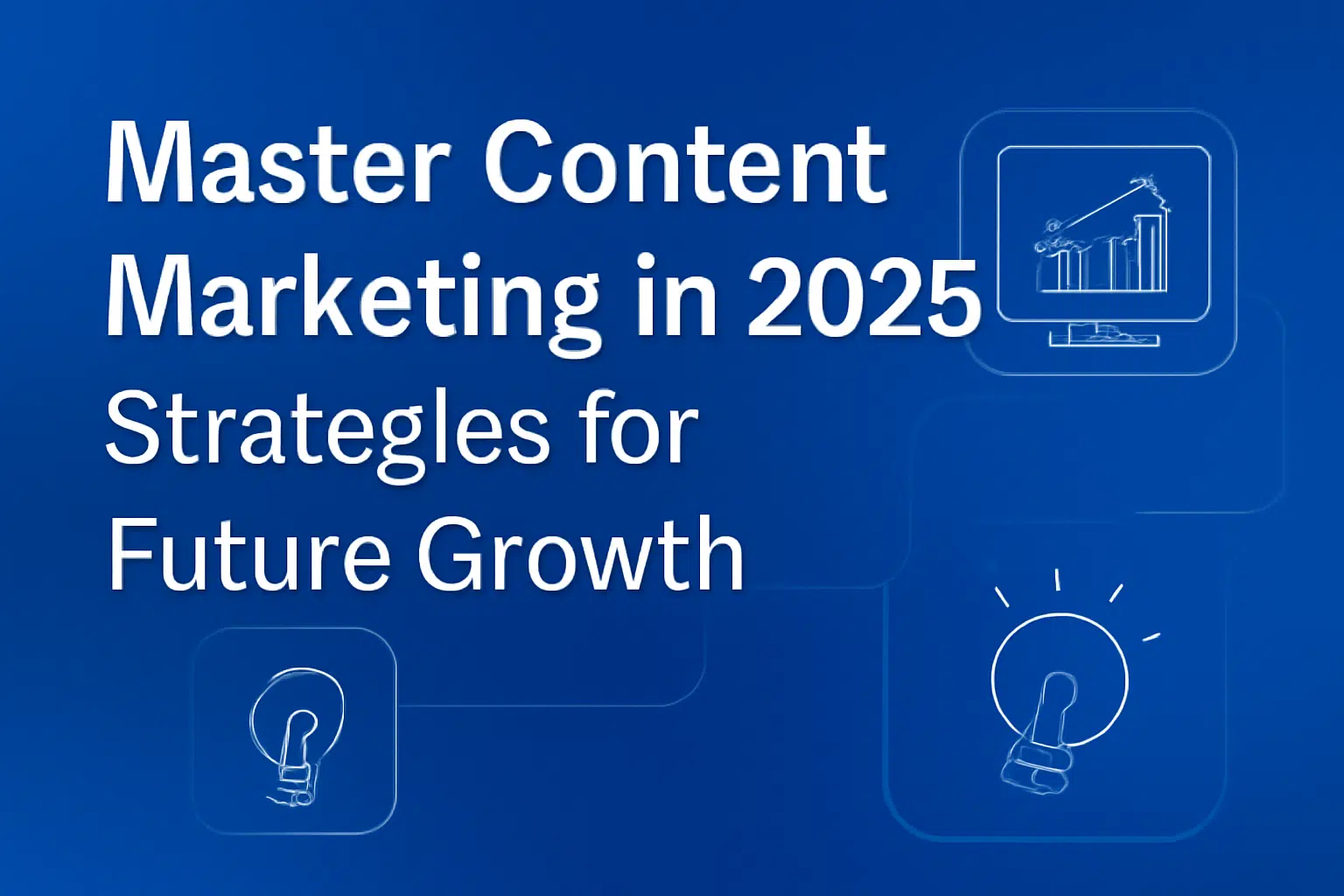

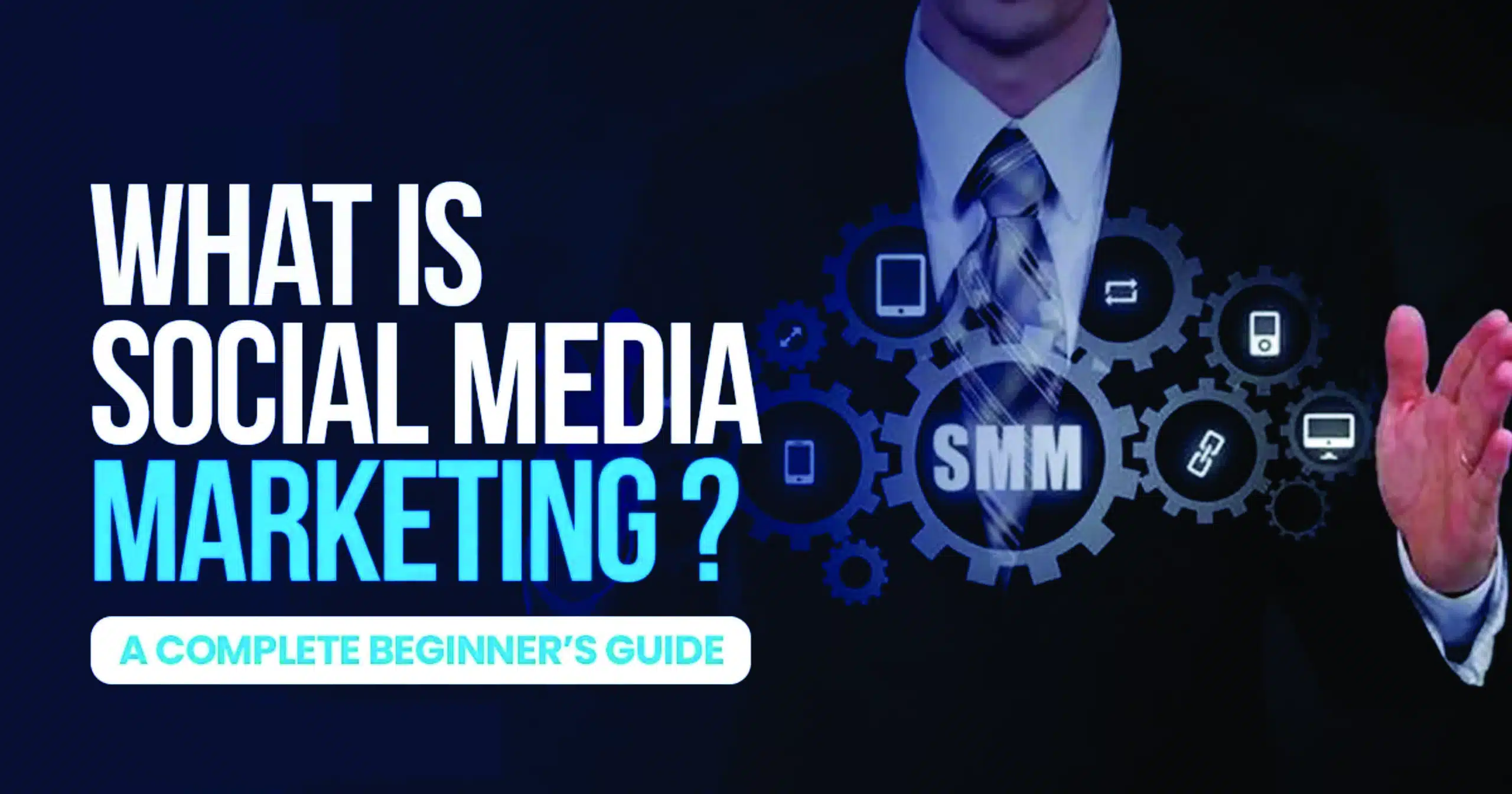
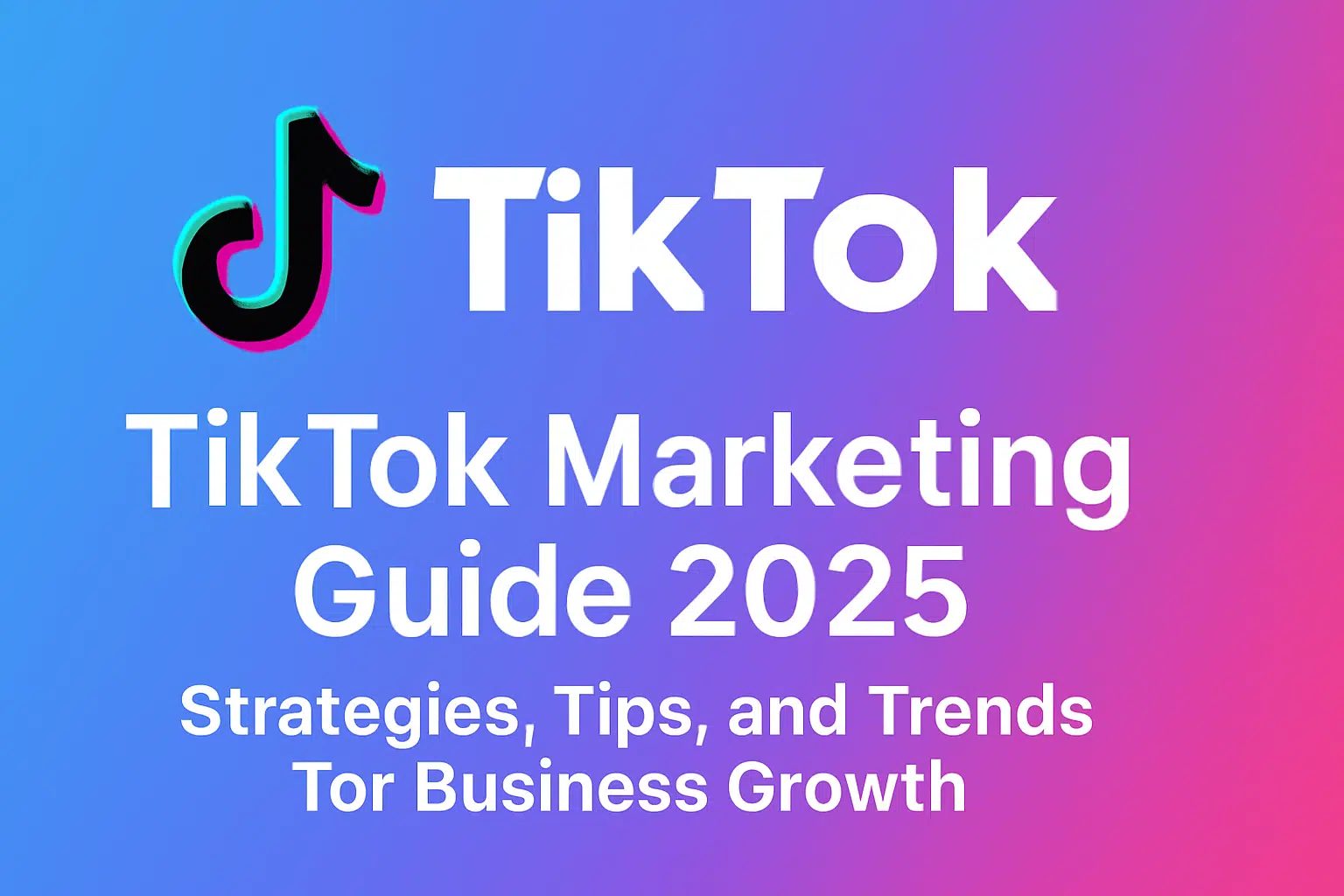
Your Trusted Partner in Digital Growth.
From zero to hero: Your digital complete marketing solution.
Copyright © 2025 World Successes | All rights reserved.
Site❤️Built by World Successes